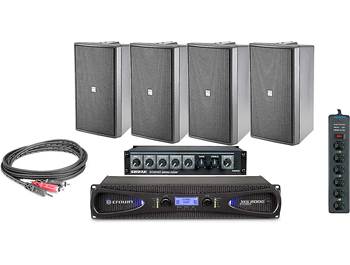One of the initial steps in efficient audio placement is to assess the size and shape of the commercial area. Different areas may have unique sound characteristics that affect how sound functions. For instance, large, expansive spaces may require more audio units to guarantee even audio coverage, while compact, enclosed areas might gain from fewer speakers placed thoughtfully to prevent overwhelming the listener. Additionally, the substances used in the construction of the space, such as partitions, surfaces, and roofs, can influence sound reflection and dissipation. Comprehending these factors helps in determining the most suitable positions for speakers.
Another important factor is the kind of audio being broadcast. Background music in a coffee shop, announcements in a retail outlet, or displays in a conference space all require different sound setups. For wikipedia reference example, in a restaurant, audio units should be positioned to establish a pleasant ambiance without dominating dialogues. In comparison, in a retail environment, speakers may need to be located to ensure that promotional messages are distinctly heard throughout the space. Customizing the speaker placement to the particular sound requirements of the setting can greatly improve the complete experience.
The height and angle of the speakers also play a major part in sound coverage. Positioning audio units at listening level can help guarantee that audio arrives the audience effectively. Additionally, angling speakers towards the center of the room can assist focus audio where it is required most. This is especially crucial in areas with tall roofs, where sound can readily disperse. By thoughtfully evaluating the elevation and angle of the audio units, businesses can establish a more engaging sound environment that maintains clients interested and employees concentrated.
Finally, regular evaluation and modification of audio positioning are essential for maintaining optimal sound quality. As the layout of a commercial space shifts, or as additional fixtures and items are introduced, the sound dynamics may change. Conducting regular assessments can help identify any issues with audio distribution and enable for required adjustments. By prioritizing strategic audio positioning and ongoing evaluation, companies can ensure that their commercial spaces offer a welcoming and enjoyable sound atmosphere for everyone.
